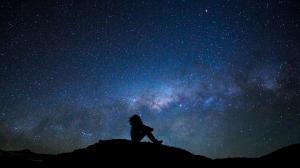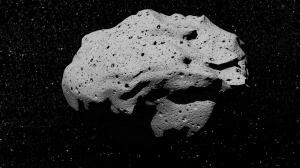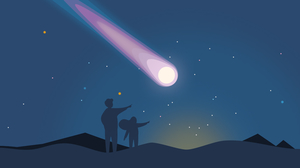In 2025, the Ursids will peak on the night between Dec 21–22
December Meteor Shower
The Ursids meteor shower is active annually between December 17 and December 24. The shower usually peaks around December 23. At its peak, observers may be able to view as many as 10 meteors in an hour.
Named After Ursa Minor
The shower is named the Ursids because the meteors seem to radiate from the direction of the constellation Ursa Minor in the sky. The Ursids are associated with the 8P/Tuttle comet.
What Time Does the Meteor Shower Peak?
The table is updated daily and shows the position of the Ursids radiant in the sky for the upcoming night. Use the date drop down above the Interactive Meteor Shower Sky Map to change dates.
| Ursids meteor shower for Columbus (Night between December 21 and December 22) | ||
|---|---|---|
| Time | Azimuth/Direction | Altitude |
| Sun 5:00 pm | 346° | 31.9° |
| Sun 6:00 pm | 349° | 29.4° |
| Sun 7:00 pm | 352° | 27.5° |
| Sun 8:00 pm | 356° | 26.3° |
| Sun 9:00 pm | 0° | 26.0° |
| Sun 10:00 pm | 4° | 26.4° |
| Sun 11:00 pm | 8° | 27.6° |
| Mon 12:00 midnight | 12° | 29.6° |
| Mon 1:00 am | 15° | 32.2° |
| Mon 2:00 am | 17° | 35.4° |
| Mon 3:00 am | 18° | 38.8° |
| Mon 4:00 am | 18° | 42.5° |
| Mon 5:00 am | 17° | 46.1° |
| Mon 6:00 am | 15° | 49.3° |
| Mon 7:00 am | 11° | 51.9° |
| Mon 8:00 am | 6° | 53.6° |
Direction to see the Ursids in the sky:
- Azimuth is the direction, based on true north; a compass might show a slightly different value.
- Altitude is height in degrees over horizon.
How to See the Ursids
You don't need any special equipment or a lot of skills to view a meteor shower. Even though all you really need is a clear sky, lots of patience, and our handy Interactive Meteor Shower Sky Map with a visibility conditions meter to see a meteor shower, the following tips can help maximize your shooting star viewing experience.
- Find a secluded viewing spot, away from the city lights. Once at the venue, your eyes may take 15 to 20 minutes to get used to the dark.
- Dress for the weather, and make sure you are comfortable, especially if you plan to stay out long. Bring a blanket or a comfortable chair with you—meteor watching can be a waiting game.
- Once you have found your viewing spot, lie down on the ground and look at the sky. You can use our Interactive Meteor Shower Sky Map or the table above to find the direction of the radiant; the higher the radiant is above the horizon, the more meteors you are likely to see.
- Meteor showers appear to originate from the radiant, but meteors can appear in any part of the sky.



